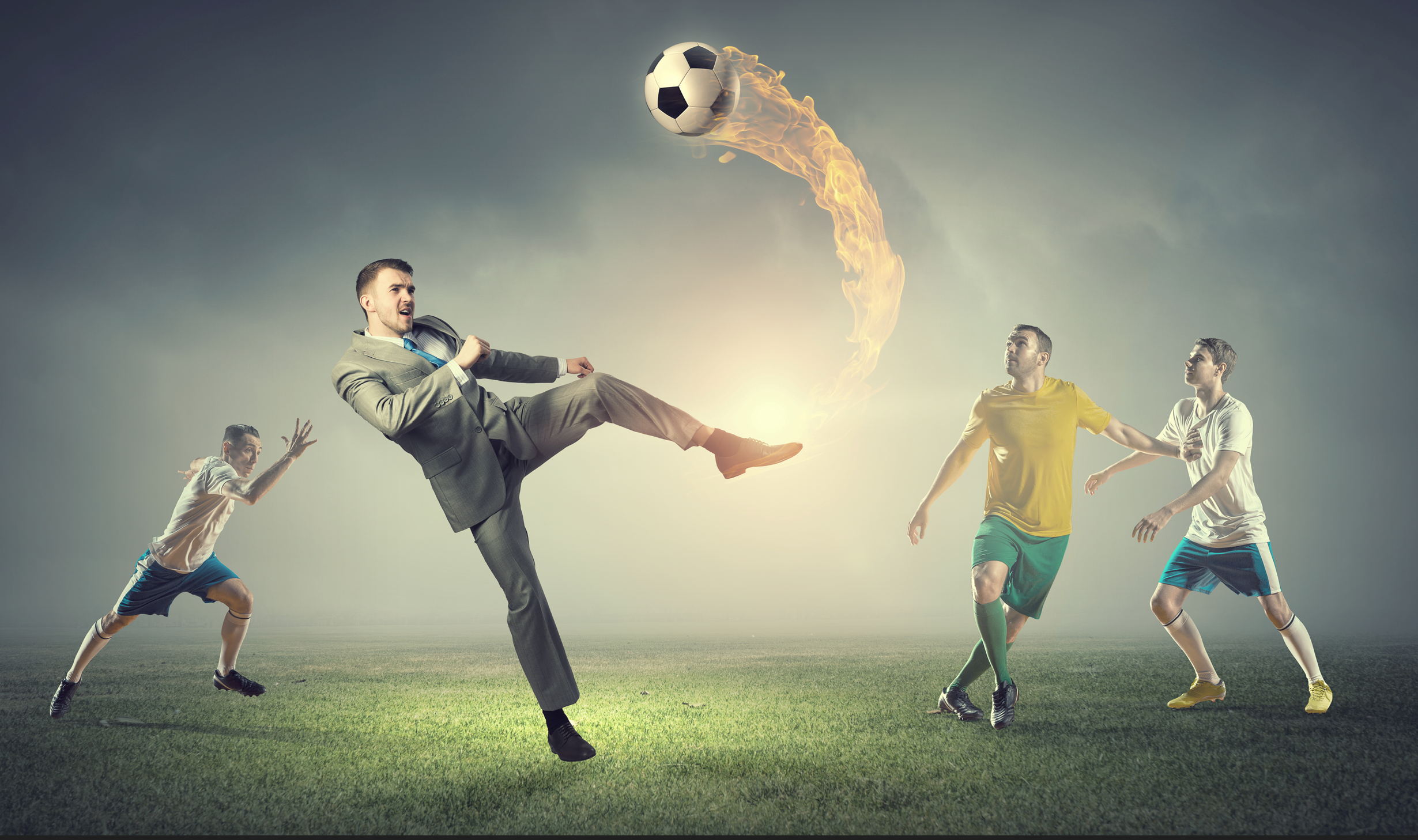
by John McCarthy Consulting Ltd. | Jul 15, 2024 | Blog, News
Below we compare the differences between FRS 102 (focusing on ‘small’ entities) and FRS 105 (‘micro’ entities) along with some other factors to consider when deciding whether to prepare accounts using the ‘small’ or ‘micro’-entities regime. The ‘small’ and ‘micro’ entities regime thresholds have changed recently. See our separate blog here about these changes.
An entity entitled to and choosing to apply the ‘micro-entities’ regime must apply FRS 105 The Financial Reporting Standard applicable to the Micro-entities Regime. The micro-entities regime is optional and therefore, when preparing their financial statements, entities may wish to consider the differences between applying FRS 102 The Financial Reporting Standard applicable in the UK and Republic of Ireland and FRS 105 when deciding on the most suitable regime. The links given here are to the January 2022 versions of FRS 102/105.
New editions of both standards are expected to be published in the summer of 2024, effective for accounting periods commencing on/after 1 January 2026.
Users of the accounts
The most important aspect to consider is the needs of users. Different stakeholders will have different expectations. For example:
- Suppliers/trade creditors
- Banks and
- Credit rating agencies may require more information than is provided by micro-entity accounts.
The level of information required by FRS 105 is very limited when compared to other standards, so be careful to advise your client about the implications for making a good impression on such stakeholders where that might be important.
Future growth plans
An entity that is entitled to either the ‘small’ or ‘micro-entities’ regime but is close to the size limits should consider carefully any decision on which regime to adopt. This is particularly relevant for a micro-entity if the business is expected to grow to the extent that it will be necessary to switch to the small entities’ regime in the near future. Transition from FRS 105 to FRS 102 Section 1A will involve significant changes to the presentation of the accounts and the accounting policies applied (see below).
Accounting Differences Between FRS 102 and FRS 105
Outlined below are eleven of the key accounting differences between FRS 102 and FRS 102:
|
TOPIC
|
FRS 102
|
FRS 105
|
| Revenue Recognition |
Section 23 completely revised (in the changes published in March 2024) to include a simplified version of the IFRS 15 Five Step Model effective for accounting periods starting 1 January 2026 with early adoption allowed from 1 January 2024.
See our July 2024 webinar on these changes called ‘The Main Changes in Irish GAAP’. |
Section 20 revised in a similar fashion to FRS 102 (in the changes published in March 2024) with the simplified version of the IFRS 15 Five Step Model introduced effective for accounting periods starting 1 January 2026 with early adoption allowed from 1 January 2024. |
| Leasing |
Section 20 is completely revised with the introduction of rules similar to those in IFRS 16, where almost all leases will go on balance sheet, and only certain types of operating lease will remain off balance sheet.
These changes are effective for accounting periods starting 1 January 2026 with early adoption allowed from 1 January 2024. |
No change to the previous regime of only capitalizing finance leases. All operating leases remain as they were before.
See our July 2024 webinar on these changes called ‘The Main Changes in Irish GAAP’. |
| Investment properties |
With the exception of investment property rented to another group entity, a revaluation each year is required, with changes recognised in profit or loss. |
Measured at cost less depreciation and impairment. |
| Property plant and equipment |
Measured at cost less depreciation and impairment but can choose to adopt a revaluation accounting policy for fixed assets of the same class |
Measured at cost less depreciation and impairment. |
| Intangible assets |
Measured at cost less amortisation and impairment but can choose in limited circumstances to adopt a revaluation accounting policy for intangible assets of the same class |
Measured at cost less amortisation and impairment. |
| Development costs and borrowing costs |
These costs can, subject to certain conditions, be capitalised. |
No option to capitalise. Must be expensed to the profit and loss account in the period in which they are incurred. |
| Trade and asset acquisition |
An intangible asset purchased with a business is normally recognised as an asset when separable and arises from a contractual or other legal basis |
An intangible asset purchased with a business must not be recognised separately from goodwill. |
| Financial instruments |
Financial instruments are divided into ‘basic’ and ‘other’ instruments.
The former are mostly measured at amortised cost, the latter mostly at fair value with movements generally recognised in profit or loss.
Entities can instead choose to apply the recognition and measurement requirements of IAS 39 Financial Instruments: Recognition and Measurement and/or IFRS 9.
The exception is directors’ loans which may be measured initially at transaction price. |
No distinction between ‘basic’ and ‘other’ with all financial instruments initially recognised at cost, which will be the transaction price. Subsequent revaluation or measurement of financial instruments at fair value not permitted.
For lending arrangements, simplifications are made in relation to the allocation of interest and transaction costs, and no requirement to calculate an effective interest rate.
Also, there is no requirement to impute a market rate of interest in arrangements conducted at non-market rates. |
| Equity-settled share-based payments |
Recognised at the fair value of the goods or services when received. For arrangements with employees, fair value is measured at the grant date and the expense recognised over the vesting period. |
Not recognised in the accounts until the shares are issued.
|
| Foreign exchange forward contract |
Recognised on the balance sheet as a financial instrument at fair value and the associated debtor or creditor retranslated at the year-end rate. Hedge accounting can be applied in certain circumstances. |
When a trading transaction is covered by a related or matching forward contract, the requirement is to use the rate specified in the contract.
If not matched to a trading transaction the cost of the foreign exchange forward contract will be recognised as a financial asset, unless it is not material in which case it will be recognised immediately as an expense in profit or loss. |
| Defined benefit pension plans |
Net interest on the net defined benefit asset or liability is recognised in the profit and loss account, and is calculated with reference to high quality corporate bonds i.e., the same rate is applied to both the plan assets and liabilities. |
Recognition of the surplus or deficit of the plan on the balance sheet not permitted. Agreed funding of deficit must, however, be recognised as a liability. Contributions payable to the plan accounted for as an expense. |
| Government grants |
Government grants can be accounted for using either the performance model or the accruals model. |
Requirement to use the accruals model.
|
| Deferred tax |
Based on timing differences |
No deferred tax |
Please see our latest CPD Webinar on The Main Changes in Irish GAAP (recorded July 2024).
See our webinar entitled ‘The Main Changes in Irish GAAP’ on the latest changes to FRS 102 here.
For more on the whole ISQM process for audit firms, please see our ISQM 1 Toolkit on our website here.
Please go to our website to see our:
- Anti-Money Laundering Policies Controls and Procedures Manual (March 2022) — View the table of contents
- AML Webinar (December 2023) available here, which accompanies the AML Manual. It explains the latest legal AML reporting position for accountancy firms and includes a quiz. Upon completion you receive a CPD certificate for attendance in your inbox.
- Letters of engagement and similar templates—Please visit our website here where immediate downloads are available in Word format. A bulk discount is available for orders of five or more items bought together.
- ISQM TOOLKIT, or if you prefer to chat through the different audit risks and potential appropriate responses presented by this new standard, please contact John McCarthy FCA by email at john@jmcc.ie.
- We typically tailor ISQM training and brainstorming sessions to suit your firm’s unique requirements. The ISQM TOOLKIT 2022 is available to purchase here.

by John McCarthy Consulting Ltd. | Jul 15, 2024 | Blog, News
As we discussed in last week’s blog, the Financial Reporting Council announced some important changes to FRS 102 in March 2024.
These changes are effective for accounting periods commencing 1 January 2026, with early adoption allowed. There were no lease accounting changes to FRS 105, but this article focuses on FRS 102. See last week’s blog for the Revenue Recognition changes to FRS 102.
Lease Accounting Changes
IFRS 16 first introduced an on-balance sheet model for lessees five years ago in 2019. FRS 102 is doing something similar now. Essentially, it means that companies will need to recognise a lease liability on the balance sheet and a corresponding right of use asset for those operating lease commitments that are currently expensed to the profit or loss.
The lease liability will be calculated using the present value of the company’s payment obligations over the remaining lease term based on a bank quotation for an interest rate for a right of use asset for the same amount.
There are recognition exemptions available for ‘low value’ or ‘short leases’ as well.
Implications of these changes
- Balance sheet – there will be an increase in total assets and total liabilities.
- Income statement – we are going to see amortisation charges for leases increase over the life of the lease unless the company is already measuring the respective asset categories on a ‘fair value basis’ where they will continue to do so using the effective interest rate.
- Operating lease expenses currently in the profit or loss will be replaced by a combination of depreciation plus finance lease interest expenses which will ultimately lead to an increase in EBITDA.
- Cash flow statement – the cash paid under the lease will remain the same, but the classification in the cash flow statement will lead to:
- An increase in cash flows from operating activities
- An increase in the outflows from financing activities
- Impact on financial ratios especially those linked to EBITDA, gearing, and net debt. Companies may need to examine more closely their:
- Debt covenants;
- Incentives; and
- other obligations that involve these EBITDA measures.
Other Disclosure Changes
Additional disclosures will also be required – both qualitative and quantitative information for lease commitments. Additionally, those companies that avail of the recognition exemption for ‘short term’ or ‘low value’ leases will need to disclose the precise details of the leases involved.
Simplification
There is a useful simplification to do with the use of discount rates. IFRS 16 requires the use of an ‘incremental borrowing rate’ (IBR), and this is where the rate implicit in the lease can’t be determined.
FRS 102 allows for the IBR too, but as an ‘easier’ alternative permits the use of an ‘obtainable borrowing rate’ (OBR) which is a much less complicated alternative. In cases where neither of these are available, FRS 102 allows for a gilt rate, but this is expected to be a rare occurrence.
Comparatives
The standard allows for the modified retrospective approach with regard to comparatives, meaning there is no need to restate comparatives.
Planning Ahead
Companies need to prepare in advance for the advent of the new FRS 102 leasing requirements by taking the following steps:
- Gather data on existing operating lease arrangements;
- Explore the implications of the potential discount rates that could be used;
- Start performing an initial impact assessment;
- Gauge what impact the leasing changes will have on their:
- Financial ratios;
- Primary statements;
- Balance sheet valuations; and
- Tax liabilities, not ignoring deferred tax.
See our webinar entitled ‘The Main Changes in Irish GAAP’ on the latest changes to FRS 102 here.
For more on the whole ISQM process for audit firms, please see our ISQM 1 Toolkit on our website here.
Please go to our website to see our:
- Anti-Money Laundering Policies Controls and Procedures Manual (March 2022) — View the table of contents
- AML Webinar (December 2023) available here, which accompanies the AML Manual. It explains the latest legal AML reporting position for accountancy firms and includes a quiz. Upon completion you receive a CPD certificate for attendance in your inbox.
- Letters of engagement and similar templates—Please visit our website here where immediate downloads are available in Word format. A bulk discount is available for orders of five or more items bought together.
- ISQM TOOLKIT, or if you prefer to chat through the different audit risks and potential appropriate responses presented by this new standard, please contact John McCarthy FCA by email at john@jmcc.ie.
- We typically tailor ISQM training and brainstorming sessions to suit your firm’s unique requirements. The ISQM TOOLKIT 2022 is available to purchase here.

by John McCarthy Consulting Ltd. | Jul 15, 2024 | Blog, News
In March this year the Financial Reporting Council announced some important changes to FRS 102.
These changes are effective for accounting periods commencing 1 January 2026, with earlier adoption allowed. There are also supplier finance arrangements which come into effect for accounting periods starting on 1 January 2025, but these are not common in SMEs, and so they will not be discussed in this blog.
Revenue Recognition Changes
The 5 Step model is being introduced into FRS 102 and is based on IFRS 16 and provides a structured approach, with appropriate simplifications in FRS 102. Revenue accounting changes were also announced to FRS 105, but this article focuses on FRS 102.
The basic scenario is to recognise revenue when promises are made regarding when the control of the goods and services is transferred to the customer, rather than when the risks and rewards are transferred.
Clients will need to:
- Review the contracts that they have with their customers to identify each promise and understand what they’ve promised to do.
- Determine a transaction price for each transaction then allocate the transaction price to each promise made under the contract.
- Recognise the revenue as and when the client satisfies each of the promises under the contract.
Likely Impact
The impact will vary depending on the company’s accounting structure, size, and complexity of their business as well as the industry that the client operates in.
For example, clients in the retail or hospitality industries usually have more straightforward contracts with simple promises e.g. the sale of consumables/services, and there may be minimal changes.
In other sectors such as software, technology or communications there might be more significant impact as contracts in these sectors tend to be more complex, involving various deliverables or long-term arrangements and, in some cases, they can have multiple promises.
A simplification in FRS 102 allows companies to combine similar contracts using a portfolio approach as opposed to recognising contracts on a contract-by-contract basis.
Likely Changes
The most likely impacts will be in areas like:
- Key performance indicators like EBITDA;
- Sales targets;
- Incentives or bonus structures that are linked to revenue, which may then have a knock-on effect on
- Negotiations with customers;
- Pricing strategies;
- Debt covenants; and
- Interest cover.
It will be necessary to consider the wider implications of this standard sooner rather than later. A detailed review (including a detailed review of sales contracts and revenue streams) on accounting policies, contract structures, and operations will be necessary.
See our webinar entitled ‘The Main Changes in Irish GAAP’ on the latest changes to FRS 102 here.
For more on the whole ISQM process for audit firms, please see our ISQM 1 Toolkit on our website here.
Please go to our website to see our:
- Anti-Money Laundering Policies Controls and Procedures Manual (March 2022) — View the table of contents
- AML Webinar (December 2023) available here, which accompanies the AML Manual. It explains the latest legal AML reporting position for accountancy firms and includes a quiz. Upon completion you receive a CPD certificate for attendance in your inbox.
- Letters of engagement and similar templates—Please visit our website here where immediate downloads are available in Word format. A bulk discount is available for orders of five or more items bought together.
- ISQM TOOLKIT, or if you prefer to chat through the different audit risks and potential appropriate responses presented by this new standard, please contact John McCarthy FCA by email at john@jmcc.ie.
- We typically tailor ISQM training and brainstorming sessions to suit your firm’s unique requirements. The ISQM TOOLKIT 2022 is available to purchase here.

by John McCarthy Consulting Ltd. | Mar 28, 2024 | News
Revenue recognition and lease accounting rules are the main changes from January 2026 arising from newly published amendments to FRS 102.
On 27th March the Financial Reporting Council published a 285 page list of the Amendments to FRS 102, FRS 105 and other FRSs. These changes will come into force from 1 January 2026 with early adoption allowed, provided all the changes are adopted simultaneously.
The changes are too extensive to be covered in this short blog but here is a flavour of what’s changing.
An earlier effective date (among changes in other FRS) applies to new disclosures about supplier finance arrangements in Section 7 of FRS 102 ‘Statement of Cash Flows’ for periods beginning on or after 1 January 2025, with early application permitted.
Where an entity adopts these amendments early:
- In the UK it shall disclose that fact (regardless of entity size), while,
- Small entities in the Republic of Ireland, are encouraged to disclose that fact.
Revenue Recognition -the main change is the use of the 5 step model from (IFRS 15) which will impact businesses that have contracts that bundle goods and services with variable consideration, warranties, customer options or significant financing components. It’s unlikely that this will impact most SMEs that much. No restatement of comparatives is required on transition.
Lease accounting – lessors will see little change, but for lessees there are major changes. Right of use assets (RoU) (as defined) are to be capitalised on the balance sheet as a RoU asset with a corresponding liability.
There are exemptions for certain:
- short term leases (defined as a lease that, at the commencement date, has a lease term of 12 months or less. A lease that contains a purchase option is not a short-term lease; and
- low value assets – defined more in terms of what they are not than what they are. The FRS gives a list of what are not on the list including cars, buses, trucks, tractors, land and buildings.
Such leases will still be treated as operating leases, taking the lease expense to profit or loss and a finance charge on the lease liability.
Like the transition rules on revenue recognition no restatement of comparatives is required on transition to the new leasing provisions.
The main impact of the leasing changes will be that EBITDA measures will change because the operating lease expense is replaced by depreciation on the asset and interest occurring on the unwinding of the corresponding lease liability as the lease is paid. For some businesses this may have a negative impact on debt covenants involving EBITDA measures.
The Financial Reporting Council will issue updated Staff Factsheets and the actual Standards themselves later in 2024. It’s hoped that by having an implementation period of 21 months before the effective date rather than the original promise of ‘at least 12 months’, the extended period will provide a bit more breathing space for users.
To hear more about the latest AML developments and how to be on the alert for suspicions of money laundering and terrorist financing under the Criminal Justice (Money Laundering and Terrorist Financing) Acts 2010 to 2021, see our latest Anti-Money Laundering webinar here.
All our courses are listed here.
Please also go to our website to see our:
- Anti-Money Laundering Policies Controls & Procedures Manual (March 2022) – View the Table of Contents click here.
- AML Webinar (December 2023) available here, which accompanies the AML Manual. It explains the latest legal AML reporting position for accountancy firms and includes a quiz. Upon completion, you receive a CPD Certificate of attendance in your inbox.
- letters of engagement and similar templates. Please visit our site here where immediate downloads are available in Word format. A bulk discount is available for orders of five or more items if bought together.
- ISQM TOOLKIT or if you prefer to chat through the different audit risks and potential appropriate responses presented by this new standard, please contact John McCarthy FCA by e-mail at john@jmcc.ie.
- We typically tailor ISQM training and brainstorming sessions to suit your firm’s unique requirements. The ISQM TOOLKIT 2022 is available to purchase here.

by John McCarthy Consulting Ltd. | Dec 6, 2021 | Blog, News
Continuing our soccer theme from last week, we look at a similar story about the topic of how intangible assets (football players) are treated.
Derby County Football Club (DCFC) entered Administration in September 2021 and suffered a points deduction at the hands of the English Football League (EFL), as a result. The club is managed by Wayne Rooney and currently features three Irish players Jason Knight, Festy Ebosele and Louie Watson.
In this blog we are concentrating on the financial statements of Derby County Football Club (DCFC) (also called the Rams) and at just one aspect of their somewhat questionable use of accounting rules. The Directors’ unusual treatment of the amortisation of their intangible assets (i.e., football players) which has led directly to the club being fined €100,000 by the EFL in June 2021.
Examining the accounting rules on the topic (Financial Reporting Council Standard FRS 102) we see that specifically FRS 102.18.23 states that the residual value of an intangible asset must be ‘Nil’, unless, either:
- A third party has committed to purchase the asset at the end of its useful life, or
- There is an active market for the asset from which the residual value can be determined, and which is probable that such a market will be in existence at the end of the asset’s useful life.
The last available filed accounts for the year to 30 June 2018 show the accounting policy wording for intangible assets costs/amortisation as: “The costs associated with acquiring players’ registrations, inclusive of EFL levies, or expanding their contracts, including agent fees, are capitalised and amortised over the period of the respective players’ contracts after consideration of their residual values.”
It is these last six words that drew the ire of the football regulator. With so much uncertainty surrounding the residual value of a player at the end of their contract/football career, many factors point to a ‘Nil’ residual value. Not least of these, is the possibility that a player may use the Bosman ruling (based on a 1995 legal case entitling a player to ask for a free transfer) which can cause the players transfer value to be lower than expected.
The net effect of the above accounting policy of course, is that the negative impact of amortisation on the club’s profits is reduced and according to one football analyst DCFC have by far the lowest amortisation percentage in their division for 2016/17.
In the Administrators’ latest statement filed at UK Companies House on 17 November, the value of the company’s intangible assets according to the latest 30 June 2018 accounts (the latest available at Companies house), are shown at almost £43 million, but appear on the Administrator’s Statement of Affairs as ‘uncertain’. Let’s hope the future for the club is brighter.
For our latest Audit Quality Control Manual (October 2021) (implementing the latest Irish Audit & Accounting Supervisory Authority standards including ISQC1 on audit quality control) click here. View the Table of Contents here.
We also have an up to date Anti-Money Laundering Procedures Manual (September 2021) – View the Table of Contents click here.










